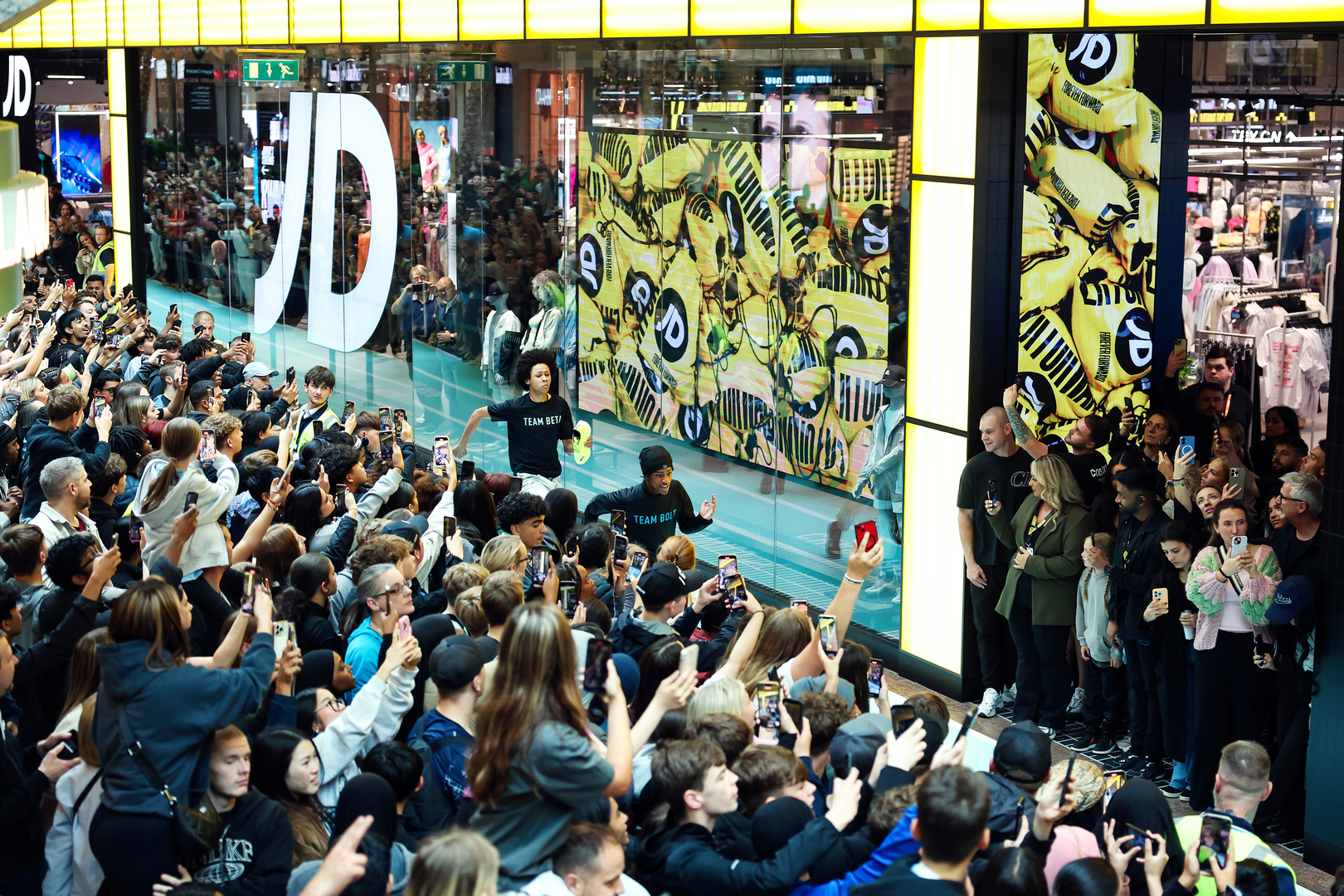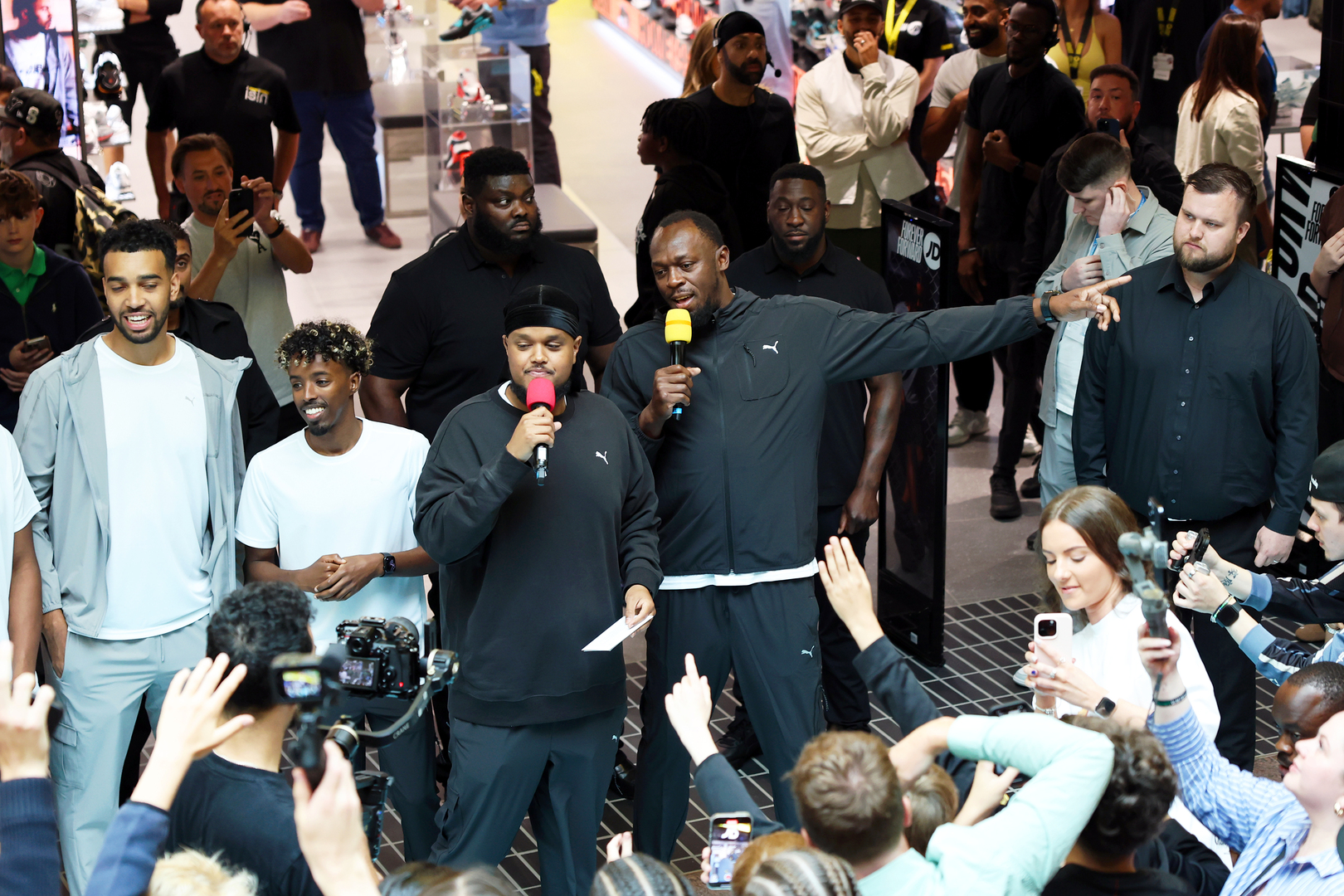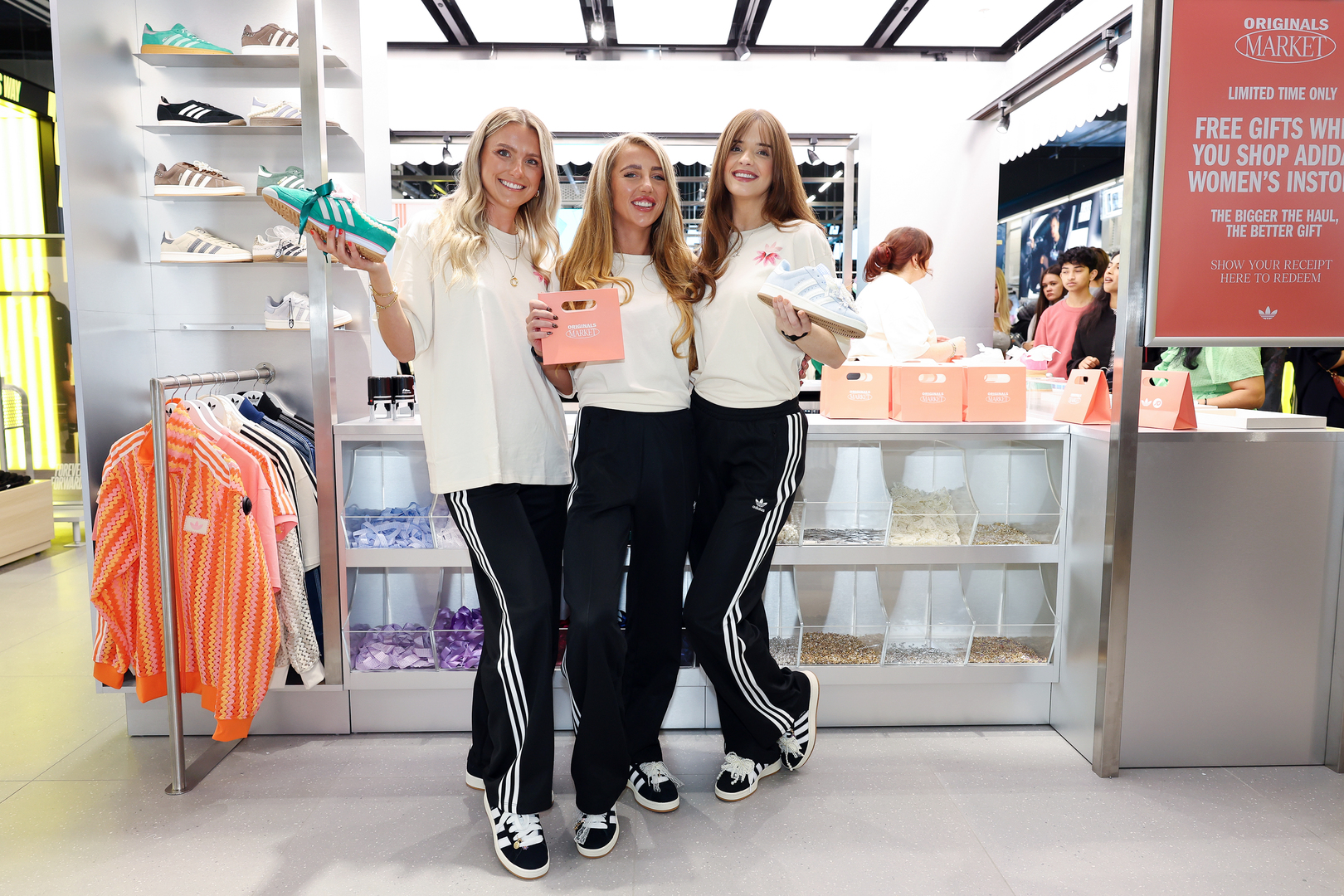Régis Schultz: Revamping JD Sports Has Taken Longer Than Expected
Upon meeting, Régis Schultz, the CEO of JD Sports, quickly examines my footwear.
“Nice sneakers,” he comments, pointing at my silver Adidas Gazelles. These iconic trainers, along with Samba styles, have dominated sneaker culture lately, though their popularity makes me feel slightly less fashionable. Nonetheless, receiving compliments from the UK’s leading sports retailer and a passionate sneaker enthusiast is certainly appreciated.
“My wife often nags me about the number of sneakers I own,” he continues as we tour the group’s newest and largest store at the Trafford Centre in Manchester. “Whenever I buy a new pair, she always wants to know where I’ll store them.”
On this occasion, Schultz sports some unbranded black trainers. Wearing a specific brand on days like today can raise eyebrows. According to him, some have even questioned, “Why weren’t you in our brand?”
Schultz, now 56, will complete three years as the CEO of the prominent FTSE 100 sportswear company this September. He took the helm during a time of prosperity, mainly due to Peter Cowgill’s influence, who transformed JD into a global sportswear entity. Under Cowgill’s 18-year leadership, JD expanded internationally, absorbed competitors, and enjoyed an astounding 8,023 percent return for investors until his abrupt exit in 2022 due to governance issues.
This should have been a straightforward role for Schultz, but his time has been marked by a series of challenges. The post-COVID boom in athleisure slowed, Nike—JD’s largest supplier—experienced a downturn, and competitors like Adidas and On Running gained traction. Rising inflation and cost-of-living pressures negatively impacted consumer demand, with the British market described as “volatile.”
Over the past year, JD Sports Fashion has seen its share price decline by approximately 35 percent, while the FTSE 100 index has risen by 7 percent.
“It’s painful,” Schultz acknowledges as we settle down in a boardroom within the store. “It’s disheartening to see share price decline. It stood at 100p when I began, and it’s currently at 80p.”
Compounding his challenges, Cowgill, who still owns a stake in the firm, “is not pleased with the share price and often gives me grief about it,” Schultz remarks with a touch of humor. Cowgill also raised concerns regarding the sale of several smaller fashion labels that had been acquired during his tenure. “Though he gives me grief, he believes we are heading in the right direction,” Schultz emphasizes, noting their frequent conversations and Cowgill’s steadfast support.
Pentland Group, which holds a 52 percent stake in JD, has taken a long-term outlook. “Mr. Pentland has advised me, ‘Don’t focus on your share price; prioritize long-term strategies: share price isn’t the best indicator of performance,’” Schultz explains.
Even with that support, Schultz has questioned whether he’s faltered in any aspect. “You start wondering, ‘Have I made errors?’ At Darty, the share price jumped from 30p to 170p during my tenure, and I’m used to generating great value for shareholders,” he reflects.

The French national, who has a reputation for being somewhat curt with the media, displays a surprisingly amiable demeanor today, even after arriving from Zurich and cycling from Manchester airport into the city center. He doesn’t drive or own a vehicle. “I cycle everywhere,” he shares, even in London.
His major regret? Not managing market expectations more efficiently. “I wish I had informed the market sooner about the costs we were incurring,” he admits. He has expressed a desire to have prepared investors for a flat profit growth while restructuring the company’s framework.
“I inherited an £8 billion turnover business with the infrastructure typical of a £100 million company, and addressing these issues has required more time and expense than I anticipated,” he adds. “This has resulted in stagnant profits.”
During his leadership, JD has made significant investments, overhauling HR systems, enhancing pay structures for younger employees, constructing a new warehouse in the Netherlands, strengthening corporate governance, and acquiring firms like the US sportswear retailer Hibbett and French company Courir.
JD recently came close to achieving £1 billion in annual profits, making its performance notable among UK retailers. However, due to these investments and ongoing economic difficulties, profits fell 11.8 percent to £715 million for the fiscal year ending in February, down from £811 million the previous year. Nonetheless, profit before tax and adjusting items stood at £923 million, aligning with expectations.
Turnover has increased roughly 10 percent on a compound annual basis since 2022. Over the past year, it climbed by 8.7 percent to reach £11.5 billion, primarily due to new store openings. The company expects a decline in like-for-like sales this fiscal year compared to the previous year.
Could Schultz have approached investor relationships differently? “We could have initiated a share buyback early on to boost earnings per share,” he concedes. “However, I felt it was more crucial to invest in our infrastructure and our personnel. Eventually, things will be recognized; it’s just a matter of time.”
Cowgill received accolades for his management style, but Schultz believed certain aspects needed trimming. He faced a considerable number of smaller fashion brands, many of which were personally bought by Cowgill, which he promptly sold. By the end of his first year, JD had divested 15 non-core brands to Frasers Group for £47.5 million.
“Peter acquired those brands; he was accommodating. He could do it because he built it, but I realized, ‘I can’t devote my time to understanding your business while also striving to grow a global company,’” Schultz explains.
Eliminating some less critical brands early on allowed him to concentrate on the company’s primary growth area: North America, now its largest market.
Schultz acknowledges that US tariffs have introduced market uncertainty, making planning difficult, but assures that they are prepared for the worst.
JD has diversified its sourcing strategies post-pandemic. “Before Covid, everything was manufactured in China. During the pandemic, we learned that this approach was unwise. We now source from Egypt, Turkey, North Africa, and Morocco, enhancing our agility,” he notes, emphasizing that sourcing from Egypt is particularly beneficial due to zero tariffs.
In the US, Nike is addressing tariffs by implementing moderate price increases. “Nike intends to share the increased costs across the board, one-third for the consumer, one-third for the manufacturer, and one-third for the rest of the supply chain,” Schultz says, anticipating that others will follow Nike’s lead.
JD has largely wrapped up its merger and acquisition pursuits in North America. “I hate to declare that we’re finished,” Schultz admits, “but I suspect we are, aside from possibly acquiring some regional players.”
The focus now lies in expanding physical stores and fully integrating Courir and Hibbett. The plan includes opening around 150 new stores globally, emphasizing markets like Italy and France, along with converting 100 existing locations this year. Approximately 50 stores will close, primarily in Eastern Europe, and they are considering expanding their franchise model in Africa, the Middle East, Southeast Asia, and South America.
Despite facing challenges, JD—established in Bury in 1981—continues to be one of the UK’s most effectively managed and consistently profitable retailers, a sentiment widely accepted in financial circles. While many high street names have struggled or disappeared, JD has maintained its status as a savvy operator with a global presence, strategic brand collaborations, and a keen sense of youth culture.
Schultz compares JD’s operational model to Inditex, the parent company of Zara. “Trends are reported directly from the shop floors,” he states. Store managers communicate sales trends to headquarters, ensuring that insights quickly circulate across around 5,000 locations.
A recent case in point: the Adidas Samba. Schultz recalls that the US team was initially doubtful about the retro style, which enjoys popularity in the UK. “They claimed it wouldn’t succeed there,” he remembers, “yet now, every woman is wearing them.”
According to Schultz, the most significant change since he took charge is the evolution of the sportswear market. “Nike was extremely popular upon my arrival, and the board insisted on strengthening that relationship due to its importance. Nike was the prominent leader, but now smaller brands like On and Hoka are gaining influence. This shift indicates that our industry is expanding,” he says.
What does he think about Elliott Hill, the new Nike leader brought in to revitalize the brand? “He’s implementing all the right strategies, which is refreshing to observe,” he comments.
And is Schultz committed to leading the company long-term? “That’s up to the board, but I certainly plan to stay. I genuinely enjoy my role… Does it appear that I’m not enjoying my job?” he jokes.

New Megastore Launches with a Bang
How does one commemorate the opening of an expansive sports megastore? By enlisting the fastest man on the planet to sprint its length, of course.
This past weekend, JD Sports unveiled its largest location yet: a sprawling 41,000 sq ft store at the Trafford Centre in Manchester, featuring the brand’s widest storefront. To celebrate the event, Usain Bolt, holder of the 100-meter world record at 9.58 seconds, dashed across the store’s width, much to the delight of onlookers.

“We brainstormed possibilities for celebrating the occasion,” an enthusiastic Régis Schultz explained prior to the launch. “So we had him run across a track laid outside the store.”
JD Sports previously operated a smaller outlet at the Trafford Centre, among its top-performing stores, along with a site in Westfield Stratford, London. The new Manchester store aims for an elevated standard—not only in dimensions but also in customer experience.
Schultz enthusiastically tours the vast space, showcasing several novel features: a football shirt printing station, an in-store barber, a custom zone for Adidas Originals trainers, and a pilot for JD’s inaugural self-checkouts.

“This is our first trial with self-checkout due to concerns over shrinkage [theft],” he admits. “We manage it quite well, but there’s always some apprehension among the team.”
A significant transformation has taken place in the women’s section. “We have put considerable effort into creating a distinct atmosphere for women,” Schultz notes. “Brands pointed out that our stores were appearing too masculine, too harsh.” More feminine color schemes, including shades of pink, have been introduced into the women’s area, moving away from the traditionally stark black, yellow, and grey designs.
So, will this store appeal to shoppers in Manchester? I casually inquire of a JD Sports employee at a nearby location. “Definitely,” he responds. “It has many fresh elements and differentiates itself from other stores. I believe it will connect with younger customers.”
And do people still visit JD Sports for footwear and sports apparel? “Absolutely. I do as well,” comes the reply.




Post Comment